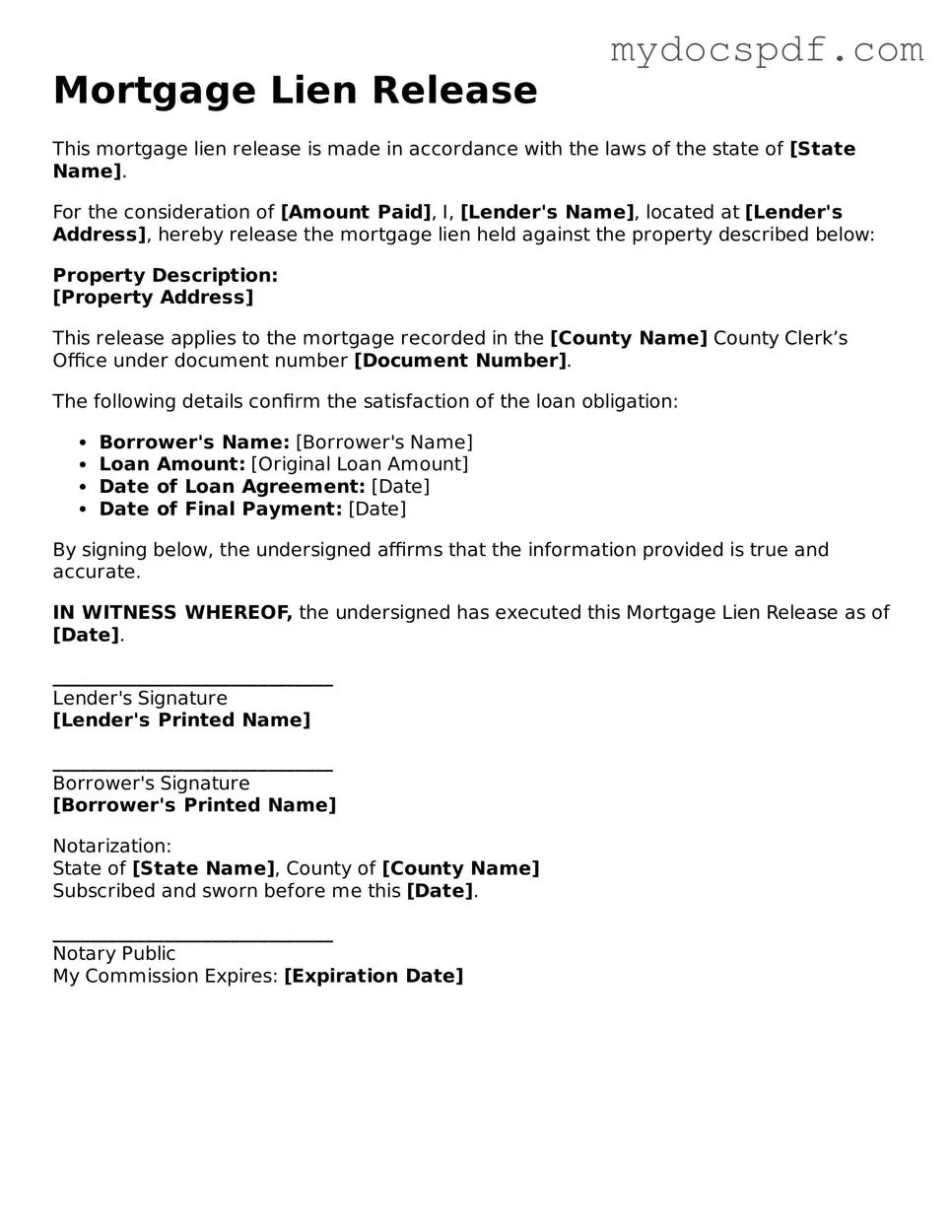Mortgage Lien Release
This mortgage lien release is made in accordance with the laws of the state of [State Name].
For the consideration of [Amount Paid], I, [Lender's Name], located at [Lender's Address], hereby release the mortgage lien held against the property described below:
Property Description:
[Property Address]
This release applies to the mortgage recorded in the [County Name] County Clerk’s Office under document number [Document Number].
The following details confirm the satisfaction of the loan obligation:
- Borrower's Name: [Borrower's Name]
- Loan Amount: [Original Loan Amount]
- Date of Loan Agreement: [Date]
- Date of Final Payment: [Date]
By signing below, the undersigned affirms that the information provided is true and accurate.
IN WITNESS WHEREOF, the undersigned has executed this Mortgage Lien Release as of [Date].
______________________________
Lender's Signature
[Lender's Printed Name]
______________________________
Borrower's Signature
[Borrower's Printed Name]
Notarization:
State of [State Name], County of [County Name]
Subscribed and sworn before me this [Date].
______________________________
Notary Public
My Commission Expires: [Expiration Date]
